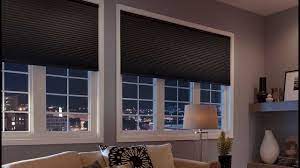Honeycomb blinds, also known as cellular shades, are a type of window covering that is designed to provide insulation and energy efficiency. Here are some key features and information about honeycomb blinds:
- Structure: Honeycomb blinds are named for their unique cellular or honeycomb structure. They consist of a series of hexagonal-shaped cells that trap air, creating a layer of insulation between the window and the room.
- Insulation: One of the main advantages of honeycomb blinds is their ability to insulate a room. The trapped air in the cells acts as a barrier, helping to regulate temperature and improve energy efficiency. This can result in reduced heating and cooling costs.
- Light Control: Honeycomb blinds offer various options for light control. They come in a range of opacity levels, from sheer to blackout, allowing you to choose the amount of natural light that enters the room.
- Design Options: These blinds come in various colors, patterns, and sizes, providing flexibility in terms of design. You can choose the style that best complements your home decor.
- Cordless and Motorized Options: Many honeycomb blinds come with cordless or motorized operation, providing a clean and modern look. Cordless options are often considered safer, especially in homes with children and pets.
- Easy Maintenance: Honeycomb blinds are generally easy to clean and maintain. Regular dusting or gentle vacuuming is usually sufficient to keep them looking good.
- Versatility: They are suitable for various window sizes and shapes, including standard windows, large windows, and even specialty shapes.
When choosing honeycomb blinds, consider factors such as your insulation needs, desired level of light control, and aesthetic preferences. Additionally, measure your windows accurately to ensure a proper fit.







